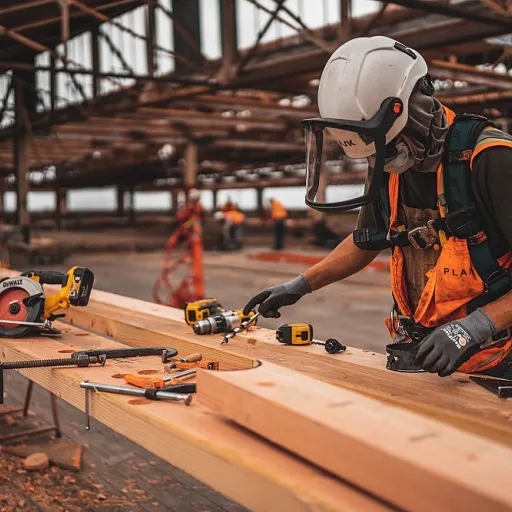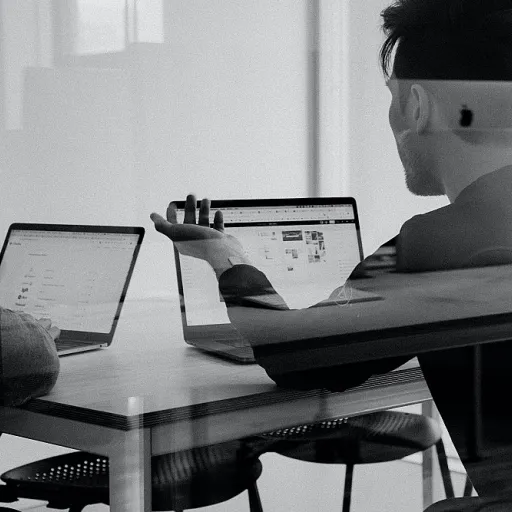
Understanding Sciatica and Its Impact on Office Workers
Recognizing the Challenges of Sciatica at Work
In the bustling world of office environments, sciatica pain is a common issue faced by many workers. This condition arises when the sciatic nerve, running from the lower back down each leg, is compressed or irritated. The discomfort can manifest as sharp pain, a dull ache, or even a sensation akin to electric shocks, often exacerbated by prolonged sitting. For those engaged in office work, this can severely impact productivity and overall well-being.
A poorly designed office chair can place undue pressure on the lower spine, aggravating sciatic pain. Without proper support and ergonomic design, workers might experience increased discomfort and a decline in their ability to focus. The importance of ergonomic solutions cannot be overstated, as they play a crucial role in alleviating sciatica pain.
Understanding these challenges is the first step in crafting a more comfortable and supportive office environment. By taking proactive measures such as selecting suitable office chairs and promoting proper posture, companies can significantly reduce the impact of sciatica on their employees. This approach not only enhances employee comfort but also contributes to a healthier, more productive workplace.
Key Features of an Office Chair for Sciatica Relief
Key Components for Pain Relief
When considering an office chair to alleviate sciatica pain, understanding the essential features that contribute to proper support and comfort is paramount. These features help reduce pressure on the sciatic nerve, promoting better posture and reducing pain. Here are some key elements to examine:
- Ergonomic Design: A well-designed ergonomic chair should provide adequate support to the lumbar spine. This helps in maintaining the natural curve of the lower back, which is crucial when sitting for extended periods.
- Dynamic Lumbar Support: Chairs with adjustable lumbar support allow for customization to fit the unique contours of your back, providing relief to the pressure on sciatica.
- Seat Height and Depth: An adjustable seat height ensures your feet are planted firmly on the ground, promoting optimal posture. The seat depth should allow for a small gap between the back of your knees and the seat edge.
- Armrests: Ergonomic chairs with adjustable armrests aid in maintaining a relaxed posture, allowing your shoulders to remain at ease.
- Pressure Relief: Seats designed to distribute weight evenly and reduce stress points can diminish pressure sciatic, providing much-needed sciatica relief.
Exploring reputable brands known for their ergonomic comfort, such as Herman Miller, can help in selecting the best office chair for your needs. For more comprehensive guides on the right choices for sciatic pain management, consider reading about picking the right chair for sciatica.
Ergonomic Adjustments for Optimal Comfort
Ergonomic Office Chair Adjustments for Optimal Sciatica Comfort
The right ergonomic adjustments can make a significant difference in managing sciatica pain. For office workers, customizing the chair to fit individual needs enhances comfort and minimizes pressure on the sciatic nerve. Here’s how you can optimize your seating arrangement:
- Adjustable Seat Height: Ensure that your feet rest flat on the floor, with your thighs parallel to it. This alignment helps distribute weight evenly, reducing the pressure on your lower spine.
- Dynamic Lumbar Support: A chair with dynamic lumbar support is essential. It should fit comfortably against your lower back to maintain the natural curve of your spine, easing the tension around the sciatic area.
- Seat Depth Customization: Your chair should allow for seat depth adjustments, ensuring there’s a gap between the edge of the seat and the back of your knees. This prevents added strain on your legs.
- Armrests Adjustment: The armrests should support your elbows at a natural angle, helping to relieve pressure from your shoulders. This indirect support aids in maintaining the correct posture, crucial for sciatica relief.
- Posture Maintenance: Keeping a good posture is vital. Regularly adjusting your seating position can help maintain proper posture, minimizing sciatic pain by preventing any static pressure on the nerve.
Implementing these ergonomic adjustments not only supports sciatica relief but also promotes long-term wellness in the office environment. Employers and office managers are encouraged to provide office chairs that support these ergonomic features, enhancing employee well-being and productivity.
Top Office Chair Recommendations for Sciatica
Recommended Office Seating Solutions
Finding the best office chair to offer sciatica relief and support can be a challenge, given the myriad of options available. However, selecting a chair that prioritizes both comfort and ergonomics is key to alleviating sciatica pain. Here are some highly recommended office chairs and their features:- Ergonomic Design: Chairs with an ergonomic design are engineered to support the body's natural posture. Look for chairs featuring a contoured seat and dynamic lumbar support, helping to reduce pressure on the sciatic nerve.
- Adjustable Features: The ability to customize your chair can significantly impact comfort. Consider chairs with adjustable height, seat depth, and armrests to ensure proper alignment of the spine and pelvis.
- Herman Miller Chairs: Known for their high-quality ergonomic office solutions, Herman Miller chairs often come with adjustable lumbar support and pressure-relieving designs, which can be critical in managing sciatica pain.
- Posture-Supporting Chairs: Chairs that encourage an upright posture can help reduce strain on the lower back. Look for models with backrests that follow the natural curve of the spine.
Creating a Sciatica-Friendly Workspace
Designing an Environment That Fosters Comfort and Well-being
Creating a sciatica-friendly workspace is crucial for mitigating the discomfort that employees with this common condition experience. As companies in the Arabian Emirates prioritize employee well-being, several strategies can help reduce sciatica pain and promote overall comfort.- Ergonomic Office Layout: Designing a space that accommodates ergonomic office chairs with dynamic lumbar support is essential. These chairs should allow for adjustable seat height and depth, ensuring that the lumbar support meets the spine’s natural curve effectively.
- Seating Areas: Consider areas for employees to alternate between sitting and standing. Height-adjustable desks or chairs that accommodate different positions can alleviate pressure on the sciatic nerve by providing opportunities to change posture often.
- Workstation Arrangement: Ensure that office workers have easy access to materials without unnecessary reaching or twisting that may exacerbate sciatic pain. Properly positioned peripherals help maintain a comfortable armrest height and natural posture, which reduces pressure on the lower back.
- Regular Breaks: Encourage employees to take regular breaks to get up and move around. Movement helps relieve pressure from prolonged sitting, reducing the risk of sciatic nerve irritation. This strategy also promotes circulation and improves overall comfort.
Employee Wellness Programs in Arabian Emirate Companies
Prioritizing Employee Well-being in Arabian Emirate Workspaces
In the bustling corporate environment of the Arabian Emirates, companies increasingly recognize the importance of employee well-being, which aligns with ensuring that office spaces are conducive to health and productivity. Addressing office-associated ailments such as sciatica pain is critical for maintaining an efficient workforce. Corporate wellness programs are integral in mitigating sciatica-related discomfort among employees. Companies implement various strategies to promote health, including:- Providing access to ergonomic office chairs that offer necessary support for the lumbar spine and facilitate better posture, helping to alleviate sciatic nerve pressure during long hours of sitting.
- Organizing workshops on proper workplace ergonomics, educating employees on how to adjust their seats, armrests, and seat height to optimize comfort and work efficiency.
- Encouraging regular movement and stretching exercises during the workday to decrease pressure on the sciatic nerve and improve circulation.













